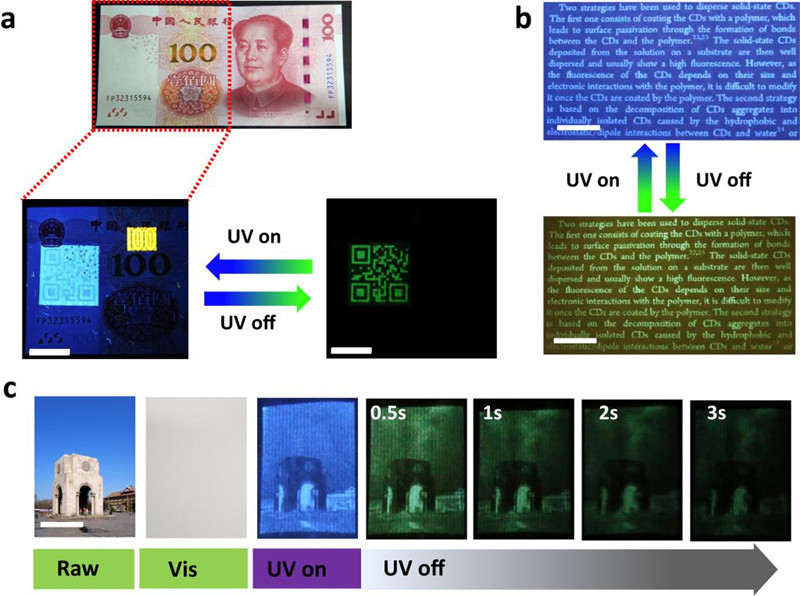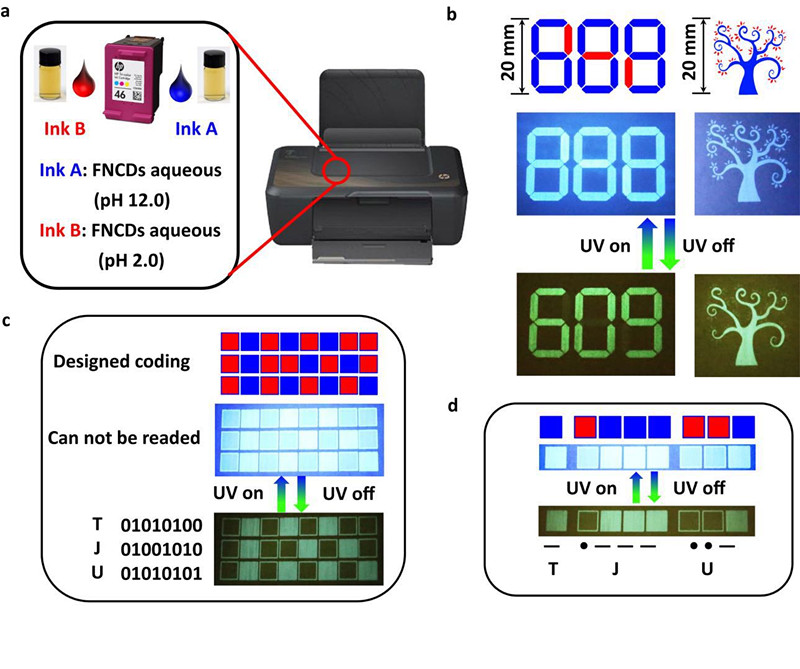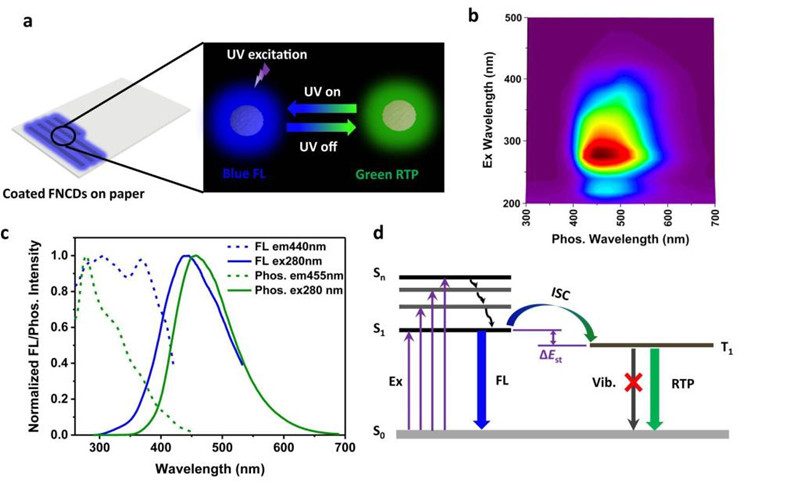Recently, a research team led by Professor Feng Wei from Tianjin University l has developed Fluorine and Nitrogen Co-doped Carbon Dots (FNCDs) with self-protective room-temperature phosphorescence. This outcome was published online in Advanced Functional Materials under the title of “Self-protective Room-Temperature Phosphorescence of Fluorine and Nitrogen Co-doped Carbon Dots” on July 25th, 2018. Long Peng, a doctoral student is the first author for the article.
With its excellent fluorescence pH stability and self‐protective room temperature phosphorescence (RTP) pH response, the phosphorescence lifetime of FNCDs at room temperature reaches 1.21 seconds in a strong alkaline environment. Encrypted information that includes complex patterns and texts can be printed on filter paper by commercial ink-jet printers with the ink developed from the aqueous dispersion of FNCDs. After drying, the ink emits strong solid blue fluorescence under the ultraviolet lamp and self‐protective green phosphorescence without the lamp. The invisible ink based on FNCDs can be applied in information recording/reading, anti-counterfeiting and steganography and the dual element co-doping technique provides an inspiration for the design and application of room temperature phosphorescent materials.
Due to its advantages of high light stability, low toxicity, good biocompatibility and low energy consumption, room temperature phosphorescent carbon dots have tremendous application potential in the field of high information security. In particular, the self-protected room temperature phosphorescent carbon dots has the following advantages: 1. High-efficiency phosphorescence emission at room temperature can be realized without considering the matrix-assisted oxygen barrier layer; 2. The direct effect of external stimulus on bare carbon dots can be beneficial to designing a phosphorescent sensor with external stimuli responsiveness; 3. Complex pattern can be designed through ink-jet printing technology; 4. High information security can be realized by phosphorescence performance in both time dimension and space dimension. However, for most room temperature phosphorescent materials based on carbon quantum dots, room temperature phosphorescence can be obtained when carbon quantum dots are embedded in the matrix, which leads to great challenges for achieving self-protective phosphorescence performance of carbon quantum dots.
It is known that luminescent invisible materials, especially room temperature phosphorescent materials, have excellent characteristics such as long luminescence lifetime and unique electron transitions between singlet and triplet states. In addition, the phosphorescence emission of these materials has significant encryption effect by eliminating short-lived fluorescence and light scattering background, which contribute to their importance as carriers for photonic encryption information. With their great economic value and wide applications in the field of information security, these materials have aroused great research interests of scientists.



Fluorine-nitrogen double-doped carbon quantum dots (FNCDs) and its applications in information security
Link to the paper: https://onlinelibrary.wiley.com/doi/pdf/10.1002/adfm.201800791
(contributed by FOCC Laboratory, Tianjin University)
Translated by Lin Ruoqiong
Editors: Yin Wei & Doris Harrington






